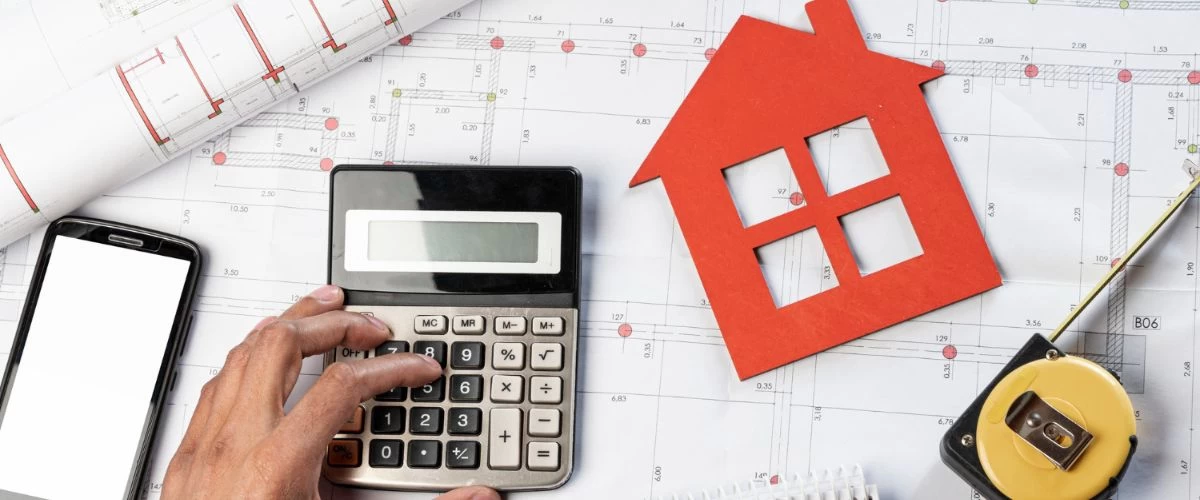Crunching the Numbers: How to Accurately Calculate Property Value

Price evaluation is an imperative step in the entire process of selling a property. And if one wants to do the same, one must know how to calculate property value. As simple as it may look at the outset, it does not involve a few appreciations and depreciations with the selling price of the property; there are numerous factors and aspects to it that need to be taken into consideration. Before we look at the process of accurately calculating property value, we must take into consideration the factors that directly, indirectly or as a mix of the two affect a property.
One must also note that Property Value is not synonymous with Fair Value. The latter is actually indicative of the approximate amount that a property can get based on where it is, current price trends, and property age.
Before understanding how to calculate property value, we will look into some imperative factors that influence it directly and indirectly.
Location
The area where a property is located directly affects the price of the property. Moreover, the built density of a place will make the property more valuable. Considering an urban settlement where there is a huge demand for housing, a vacant property will be a huge asset. Similarly, at the neighbourhood scale, the overall appeal, accessibility, and safety of the neighbourhood affect people’s preferences of investing and paying for it.
External and Internal Factors
We all encounter these properties randomly which make us go wow. And, many a times the next thing that comes out of our mouth is it might be really expensive. This is exactly how the exterior affects the property value. What does the property look and feel like? The outer appeal, aesthetics, architecture, design, façade, building condition, building age all affect the property value.
Interiors too entail parameters like the architectural design, the littlest of details such as the size of the kitchen, living room, number of bedrooms, furnishing, and the likes.
Supply and Demand
The estimate in this case is influenced by the area in which the property is situated. Are there any nearby houses with the same features? What is the state of these attributes in relation to the aforementioned parameters?
Let us now focus the conversation on how to calculate property value. Here are some commonly used methods in the Indian context.
-
Development Method
When valuing vacant or unbuilt land, the development method particularly comes in handy. It takes into consideration the development scope of the vacant land being considered. It also takes into account the Building Code, Development Controls, Zoning Regulations and market demand for the designated land use. Other factors taken into consideration are connectivity, location, and plot size. It is particularly useful for land parcels intended for commercial and residential development.
-
Guidance Value Method
The lowest value below which a property cannot be registered in a state is known as the guidance value. It is crucial to indicate the guiding value while starting your calculations. It will make it easier to determine the starting point for the property's price. It should be noted that land value may be higher than guiding value, which is continually revised in light of current market trends.
-
Belting Method
This process is used when dealing with larger land parcels and properties owing to the complexities involved in assigning a uniform rate to the entirety of the area. It entails drawing parallel lines that are parallel to the center of the road to divide the land into numerous strips. Then, a unique price is given to each of these belts. The belt with the most road frontage is given the greatest price. The price of the total property is then determined using the sum of these belts.
-
Income Method
If you are wondering how to calculate property value using the income method, continue reading ahead. The income approach is commonly utilised when it comes to commercial places, such as office buildings, malls, and retail centres. It has a fairly simple underlying logic: a property is worth what it can earn. This involves taking into consideration the revenue generation potential of the commercial space. The parameters of capitalisation rates, current market rent, operational costs, and vacancy rates are used to calculate the property value.
-
Sales Comparable Method
Sales Comparable Method, or even called Fair Market Value Method, is particularly used for ready-to-move in residential properties. Similar properties in the neighbourhood where the property is situated are taken into consideration. If you are considering doing the same for a house that you own, check for three residential properties in your locality that just got sold. Parameters considered include comparable carpet area amenities. The per-square-foot rate is then calculated.
Conclusion
Knowing the market value of a property can help buyers make informed decisions and also keep malpractices and potential legal issues at bay. Most importantly, such precise knowledge of your property gives you a lot of power and control as an owner and an investor, enabling you to time the market right and negotiate in dealings with an upper hand.
Get in Touch
Let our experts help you answer your questions
Get in Touch
Let our experts help you answer your questions


